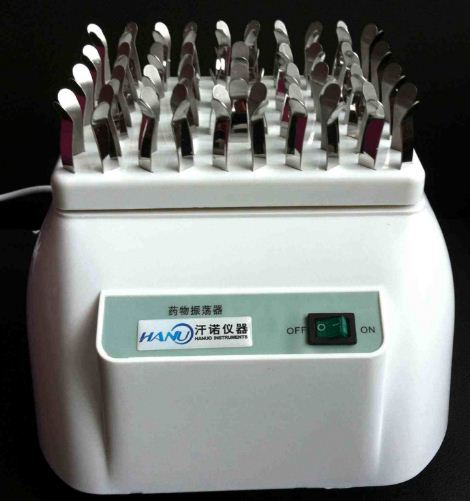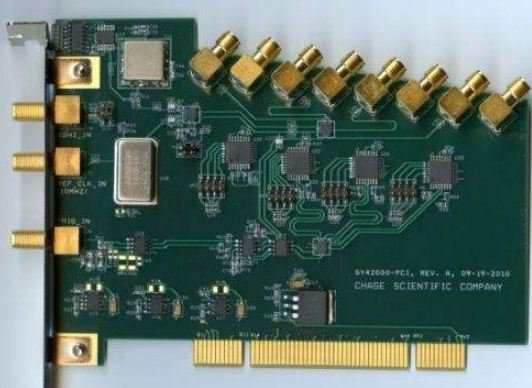Oscillator basics
An oscillator is a material and structure that produces a repeatable, predictable frequency response when excited, and is a key component in many analog, digital, and RF circuits. Some types of oscillators consist of electrical components that oscillate through interaction, while others use materials that generate resonant signals when excited. To improve the electrical performance and stability of the oscillator for long-term operation, temperature, material and component degradation, and other factors, some types of oscillators also use digital or analog control circuitry.

The picture shows the drug oscillator
LC circuit oscillator
Some of the earliest oscillators used inductive and capacitive circuits to generate resonant and oscillating signals. Early radio systems achieved the goal of changing the resonant characteristics by adjusting the inductance and capacitance values ​​with knobs and switches. Such systems are typically larger than oscillators using other technologies and must be tuned continuously to maintain the desired oscillation performance. The LC circuit oscillator has been largely replaced by crystal oscillators and other circuit type oscillators in integrated circuits.
Coaxial resonant oscillator
Coaxial components can also be used to create inductive and capacitive characteristics at specific frequencies that are consistent with their geometry and cavity geometry. Although these devices are limited in miniaturization due to the required operating frequency, they are generally very stable and provide excellent phase noise performance in the range of hundreds of megahertz to several gigahertz.
Crystal oscillator
The crystal oscillator is composed of a crystal structure that generates resonance characteristics upon being electrically excited. Such oscillators are typically very stable, have excellent phase noise, and can be made into relatively small structures. In more demanding applications, crystal oscillators are typically integrated into more complex analog or digital circuits that utilize one or more oscillators and environmental control systems to achieve more reliable performance for both frequency and phase. Limitation over time. The oscillation frequency of the crystal oscillator is proportional to the crystal size, and the crystal oscillator can be fabricated to generate resonance characteristics in the range of several Hz to gigahertz.
Dielectric resonant oscillator (DRO)
The dielectric resonator oscillator is a type of microwave and millimeter wave frequency oscillator that utilizes a dielectric resonator to produce a very stable and very low-noise high-Q resonance characteristic. A dielectric resonant oscillator generally uses a dielectric block having a high dielectric constant and a low loss factor as its resonant element, and similar to other resonant structures, the operating frequency of the dielectric resonant oscillator is related to the physical size of the dielectric block. Although the dielectric resonator oscillator is similar to the cavity resonator of the coaxial resonant oscillator, its resistive loss at high frequencies does not increase.
Phase-locked oscillator (PLO)
The phase-locked oscillator is a composite structure consisting of an oscillator and an analog or digital auxiliary control circuit for improving the stability of the oscillator. The phase-locked oscillator implements adjustments to the resonant characteristics or oscillator excitation using a feedback network that corrects and "locks" the desired frequency characteristics. The requirements of the phase-locked oscillator circuit depend on the type of oscillator, frequency requirements, spectral quality requirements, power output, and other environmental factors.
Voltage controlled oscillator (VCO)
A voltage controlled oscillator is an oscillator that can be controlled by an input voltage signal, typically a DC signal. The voltage controlled oscillator is divided into a voltage controlled crystal oscillator (VCXO) with a variable capacitance (varactor) diode device, and a yttrium iron garnet (YIG) tuned oscillator.
Frequency synthesizer basics
A frequency synthesizer is a circuit that can generate multiple frequencies from a single reference frequency. Frequency synthesizers typically use different techniques such as frequency multiplication/frequency division, mixing, or phase-locked loops to generate signals or modify the oscillator. One of the latest techniques is called direct digital synthesis, which uses a digital programming method such as a lookup table to generate the desired output frequency.

The picture shows the frequency synthesizer
Phase-locked loop (PLL) frequency synthesizer
The phase-locked loop frequency synthesizer is similar to the phase-locked oscillator in that the feedback control circuit of the phase-locked loop frequency synthesizer further adjusts the output frequency in a predictable manner. Similar to the lock-in oscillator, the purpose of the phase-locked loop frequency synthesizer feedback circuit is to lock the output phase and input phase of the circuit. However, the control signal generated by the phase-locked loop frequency synthesizer is also used as the voltage-controlled oscillator. excitation. Some phase-locked loop synthesizer structures are indirect digital synthesizers designed with integer N or fractional N.
Integer N phase-locked loop frequency synthesizer
This type of phase-locked loop synthesizer uses a multiplier function with negative feedback to generate an output frequency that is an integer multiple of the reference frequency. Typically, this control function is implemented by a digital circuit that controls the analog voltage from the output voltage controlled oscillator. An unavoidable disadvantage of integer-N phase-locked loops is that the phase noise of the signal increases as the doubling factor increases.
Fractional-N phase-locked loop frequency synthesizer
An improvement of this type of phase-locked loop synthesizer over an integer-N synthesizer is that it allows the output frequency to be the ratio of the fractional channel of the operand to the fractional modulus. Therefore, the resulting frequency resolution is a fraction of the phase detector frequency, thereby effectively reducing phase noise compared to integer N synthesizers. However, this type of phase-locked loop synthesizer must be designed accurately, so it is more complex than other phase-locked loop synthesizers.
Direct Digital Synthesis (DDS) Frequency Synthesizer
The latest digital synthesis RF signal generation technology has evolved to generate RF signals directly from digital reference signals. This process typically involves creating a digital waveform that is then converted to a radio frequency signal by a digital to analog (D/A) converter. DDS frequency synthesizers are typically packaged as integrated circuits and only need to use a clock that provides sufficient margin and precision to generate the target signal.
Glass tube liquid level gauge is a direct reading liquid level measuring instrument, which is suitable for the on-site detection of liquid position in general liquid storage equipment in the process of industrial production. It has simple structure and accurate measurement. It is a traditional on-site liquid level measuring tool. Generally used for direct detection. A needle valve is installed at both ends of the liquid level gauge. When the glass tube is broken due to an accident, the needle valve will automatically close under the pressure of the container to prevent the medium in the container from flowing out.
Marine Glass Tube Level Gauge,Marine Dial Level Gauge,Magnetic Float Level Gauge,Ss Magnetic Float Liquid Level Gauge
Taizhou Jiabo Instrument Technology Co., Ltd. , https://www.jbcbyq.com